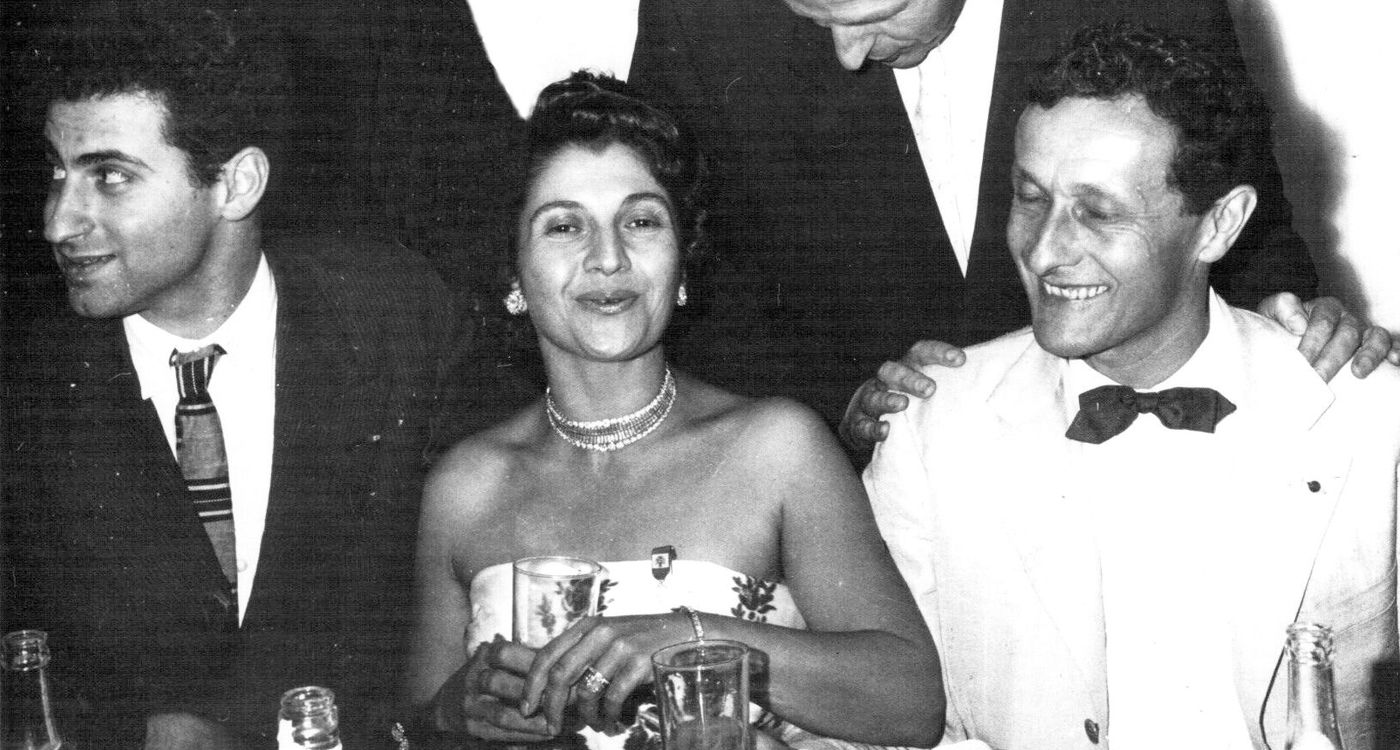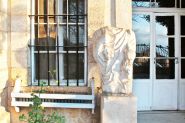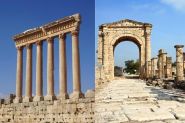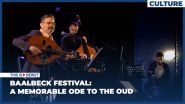
Amid the chaos and violence devastating Lebanon, particularly the city of Baalbeck, it is imperative to turn to the history of this cultural cradle to ensure its memory, at least, endures. The Baalbeck Festival of yesteryears remains the ultimate reflection of an idealized Lebanon, a symbol of reconciliation through art, whose meaning is slowly fading today. In this inaugural article of our series, we trace the genesis of this luminous festival.
Winter awakens early in Lebanon, shaken by the breath of time. Winds of violence reignite the embers of war, buried beneath the ashes of a peace that, alas, hangs by a thread. The rain turns furious, desperate, ashy and absurd. A snow of fire and blood falls, heavy and relentless. Its impudent crimson stains a humanity stripped from its soul. The sky oozes death. A purulent downpour drenches the barren soil, seeping into its mournful furrows, awakening with its crackling those who rest in peace. Thus, they open their eyes to the horror of the scene.
From their pantheon, Assi and Mansour Rahbani cast a stunned glance at the millennial columns of Baalbeck, once reflecting the glimmer of their stardom. Now, the city of the sun trembles beneath the blows of a world losing its balance. Besieged by violence, its looks on with uneasy eyes; its temples fear dissolving into chaos and oblivion. Yet, Baalbeck is more than just a pile of stones; it is, above all, the living memory of a country of paradoxes, a country that once welcomed the greatest artists of the world, against all odds. In this first article, we delve into the origins of the Baalbeck Festival, tracing the pivotal milestones in its history before the emergence of a distinct Lebanese musical identity shaped by the Rahbani Brothers and Fayrouz over decades.
Under a Levantine sky
March, 1955, the Lido, Paris. An impromptu encounter between Jean Marchat, a member of the Comédie-Française, Tony Azzi, a Lebanese impresario, and Francis Savel, a painter and filmmaker, would spark one of the Middle East's most ambitious cultural projects. A line from Racine’s Bérénice – “How sad the Eastern desert now my home” – surfaced in their conversation, conjuring the ancient ruins of Baalbeck in their collective imagination. Eureka! According to Salah Stétié, this was the initial spark that ignited the creation of the Baalbeck Festival. Five months later, Marchat’s troupe anchored at the city of the sun, following stops in Beirut in 1947 and 1952.
August, 1955. The warm Mediterranean breeze discreetly weaved through the ancient columns of the Temple of Bacchus, scattering golden dust that briefly shimmered under the awestruck gaze of a crowd gathered for the festival’s inauguration. In this mythical setting, bathed in a golden twilight, the French troupe performed Pierre Corneille’s Polyeucte. The success of the performance exceeded all expectations, deeply moving a Francophone audience, struck not only by the protagonist's heroic sacrifice but also by the majesty of the site. The French press quickly took notice of the event, lauding the boldness of a festival that showcased Western culture under a Levantine sky.
A political victory
In February of 1956, at President Camille Chamoun’s behest, a committee was formed to perpetuate the festival, now a powerful symbol. “The Baalbeck Festival was initiated by President Chamoun following several inconclusive attempts. He decided to establish a permanent summer festival,” recounted the late Lebanese-French pianist Henri Goraieb in correspondence with the author of these lines. Initially, Chamoun entrusted Nadia Kettaneh with the 1956 season’s programming. “But as progress stalled, he reassigned the task to Aimée Kettaneh, who took the reins and, for many years, delivered festivals of the highest quality,” continued the renowned virtuoso, known for his close ties to the Chamoun family.
Despite technical and financial obstacles, the program came to fruition with assistance from embassies and the French Association for Artistic Action (AFAA). Jean Cocteau headlined, bringing his play La Machine infernale to Baalbeck’s ruins despite growing political tensions, notably the Suez Canal crisis. “The performance in Lebanon takes place among the ruins. If I oversee the details, it could be magnificent. August. I will go,” wrote the French playwright in a journal entry dated May 12, 1956. The festival kicked off with great success on July 28, despite the surrounding turmoil. Three days later, Igor Stravinsky’s Firebird spread its wings in Lebanon for the first time, taking flight on the steps of the Temple of Bacchus. The NDR Orchestra of Hamburg, conducted by Léon Barzin and featuring Henri Goraieb on the piano (details of this concert will be covered in the series’ third article, ed.), brought the work to life, filling the space with incandescent harmonies.
Local press hailed this edition as a “major political victory” for Lebanon, a “rebuke to [Gamal Abdel] Nasser, to Francophobia, to xenophobia,” according to Cocteau. Days later, President Chamoun awarded the Lebanese Order of Merit’s Gold Medal to Aimée Kettaneh, Hamburg Symphony Orchestra conductor Georg Jochum, German pianist Wilhelm Kempff, and Léon Barzin.
The Rahbani era
Lebanese folklore, which became an integral part of the Baalbeck Festival, was only incorporated from 1957 onwards to allow for meticulous preparation. Rooted in the country’s mountains and villages, this popular art form soon became an essential facet of Lebanon’s cultural identity, characterized by a rich diversity of artistic and cultural influences. The Baalbeck Festival became the premier stage for promoting and celebrating these artistic expressions while continuing to honor the Western classical repertoire, featuring the world’s most renowned performers. Therefore, the Rahbani Brothers, Fayrouz, Sabah, Wadih al-Safi, Philimon Wehbeh, Nasri Chamseddine, Elie Choueiri and others carried the torch of this new musical signature, commonly called “Lebanese music.” This theme will be explored in the next article of the series.




Comments